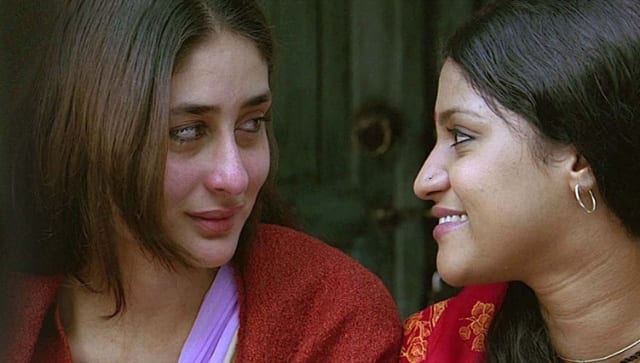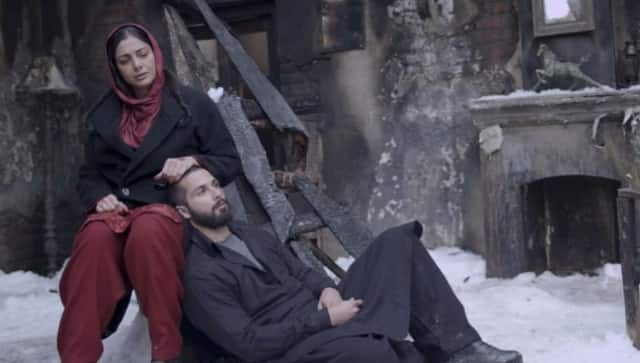Vishal Bharadwaj has directed a web series with the ensemble murder mystery, Charlie Chopra and the Mystery of the Solang Valley. Taking on the enriched storytelling legacy of Agatha Christie, Bharadwaj follows up on multiple retellings that British TV channels like the BBC and ITV have made household viewing for decades. Not a small challenge, he has given his story Indian context and spin with characters that could fit into any local neighbourhood. Reinterpreting Christie’s The Sittaford Mystery, this time, murder most foul takes place in snow-covered locales of Manali and the Solang Valley. Amusingly featuring the entire Naseeruddin Shah- Ratna Pathak Shah family (kids Vivaan, Imaad and Heba), and a sizable list of actors, Bharadwaj’s detective is
Charlie Chopra , a sharp-tongued Punjabi woman. Also an organic farmer and with high stakes personally invested with this murder, she tackles crime by talking to the camera, sometimes making the narrative bumpy. The series has turns and surprises packed in, but the story feels uneven in parts. Still it is a solid attempt at bringing a homegrown murder mystery that goes beyond skin deep investigation. [caption id=“attachment_13174452” align=“alignnone” width=“640”] A still from Maqbool[/caption] Bharadwaj has reinterpreted the written word for the screen since the beginning of his career. His love for Shakespeare is evident with his debut film, Maqbool (2004), his rawest and most heartfelt film yet. Taking on Macbeth in the context of Mumbai’s criminal underworld, with Irrfan Khan delivering a dazzling performance as a vulnerable and guilt ridden protagonist alongside his lover (Tabu), this film inhabited Mumbai with its uncomfortable weather and unglamorous visual side. It doesn’t beautify the mess that is India’s maximum city. When he interpreted Othello with Omkara (2006), he worked with the culture, language and landscape of arid, near-deserted farmlands and highways of Uttar Pradesh. The film featured an outstanding performance by Saif Ali Khan, and Kareena Kapoor Khan, Ajay Devgan, Vivek Oberoi and Konkona Sen Sharma in stand out roles. The dialect and local culture enriched the story of Omkara and enhanced its authentic feel. Bharadwaj’s most indulgent and visually stunning adaptation of Shakespeare is Haider (2014). With remarkable performances by Shahid Kapoor and Tabu, the militancy of Kashmir made for the backdrop, with its stark, snow clad beauty becoming an element of enrichment in the story’s violence. [caption id=“attachment_13174462” align=“alignnone” width=“640”]
 A still from Omkara[/caption] His love for books and literature seems to extend to his fondness for the Himalayan hills. In his web series, he works with DoP Tassaduq Hussain (Omkara and Kaminey) to create a fairy tale like texture to homes and hilly resorts. Cottages with wooden awnings laden with snow and pine trees hidden by thick snowfall as cable cars commute through this landscape reminds one of Sixties Hindi film classics. It also makes murder and mysteries credible, shrouding the goings on with diminished light and some secrecy. This touch- of the weather or a landscape becoming key to a story- also emerged in his film Saat Khoon Maaf (2011). Based on Ruskin Bond’s novella Susanna’s Seven Husbands, this film alternates between Coorg’s dense green valleys and the snow-covered imagery of Kashmir for a bit. Rain and winding hillside roads play an important part in moving the story forward. Priyanka Chopra’s performance stands out in the film as does its ability to capture the isolation of those that live in remote plantations. [caption id=“attachment_13174442” align=“alignnone” width=“640”]
A still from Omkara[/caption] His love for books and literature seems to extend to his fondness for the Himalayan hills. In his web series, he works with DoP Tassaduq Hussain (Omkara and Kaminey) to create a fairy tale like texture to homes and hilly resorts. Cottages with wooden awnings laden with snow and pine trees hidden by thick snowfall as cable cars commute through this landscape reminds one of Sixties Hindi film classics. It also makes murder and mysteries credible, shrouding the goings on with diminished light and some secrecy. This touch- of the weather or a landscape becoming key to a story- also emerged in his film Saat Khoon Maaf (2011). Based on Ruskin Bond’s novella Susanna’s Seven Husbands, this film alternates between Coorg’s dense green valleys and the snow-covered imagery of Kashmir for a bit. Rain and winding hillside roads play an important part in moving the story forward. Priyanka Chopra’s performance stands out in the film as does its ability to capture the isolation of those that live in remote plantations. [caption id=“attachment_13174442” align=“alignnone” width=“640”] A still from Haider[/caption] A lesser-known film of his, but equally immersive in its local culture, is The Blue Umbrella (2005). A National Film Award winner for Best Children’s Film, this one is set in Garhwal. Adapted from another Ruskin Bond story by the same name, the film is convincing because it is about the tiny squabbles that occur in a tiny, less connected village in the Himalayan hills. Adapting stories from books to films and web series has caught up in India today. Bharadwaj’s knack of turning books, plays and short stories into good content for the screen precedes this trend. His characters carry a touch of the bookish, a subtle balance that he manages to pull off with the odd quirk and stand out behavioural tick in them. Sometimes, this doesn’t work. For instance, with Rangoon (2017), his impressions of North East India before Independence lacked authenticity or a rooted approach. Some of it seemed imposed from a different world entirely. Similarly, with Pataakha (2018), there is almost a hasty need to pack in a lot of local flavour to fill in for a thin story. But these misfires are infrequent. Most of the time, when Vishal Bharadwaj sets a film or a story in a certain location and local culture, he makes it identifiable for posterity. We don’t have many auteurs in our cinema, despite churning out volumes of films. Bharadwaj remains one, who can build an immersive world within Indian spaces that make a story richer and that much more entertaining.
A still from Haider[/caption] A lesser-known film of his, but equally immersive in its local culture, is The Blue Umbrella (2005). A National Film Award winner for Best Children’s Film, this one is set in Garhwal. Adapted from another Ruskin Bond story by the same name, the film is convincing because it is about the tiny squabbles that occur in a tiny, less connected village in the Himalayan hills. Adapting stories from books to films and web series has caught up in India today. Bharadwaj’s knack of turning books, plays and short stories into good content for the screen precedes this trend. His characters carry a touch of the bookish, a subtle balance that he manages to pull off with the odd quirk and stand out behavioural tick in them. Sometimes, this doesn’t work. For instance, with Rangoon (2017), his impressions of North East India before Independence lacked authenticity or a rooted approach. Some of it seemed imposed from a different world entirely. Similarly, with Pataakha (2018), there is almost a hasty need to pack in a lot of local flavour to fill in for a thin story. But these misfires are infrequent. Most of the time, when Vishal Bharadwaj sets a film or a story in a certain location and local culture, he makes it identifiable for posterity. We don’t have many auteurs in our cinema, despite churning out volumes of films. Bharadwaj remains one, who can build an immersive world within Indian spaces that make a story richer and that much more entertaining.
Read all the Latest News , Trending News , Cricket News , Bollywood News , India News and Entertainment News here. Follow us on Facebook, Twitter and Instagram.


)
)
)
)
)
)
)
)
)



